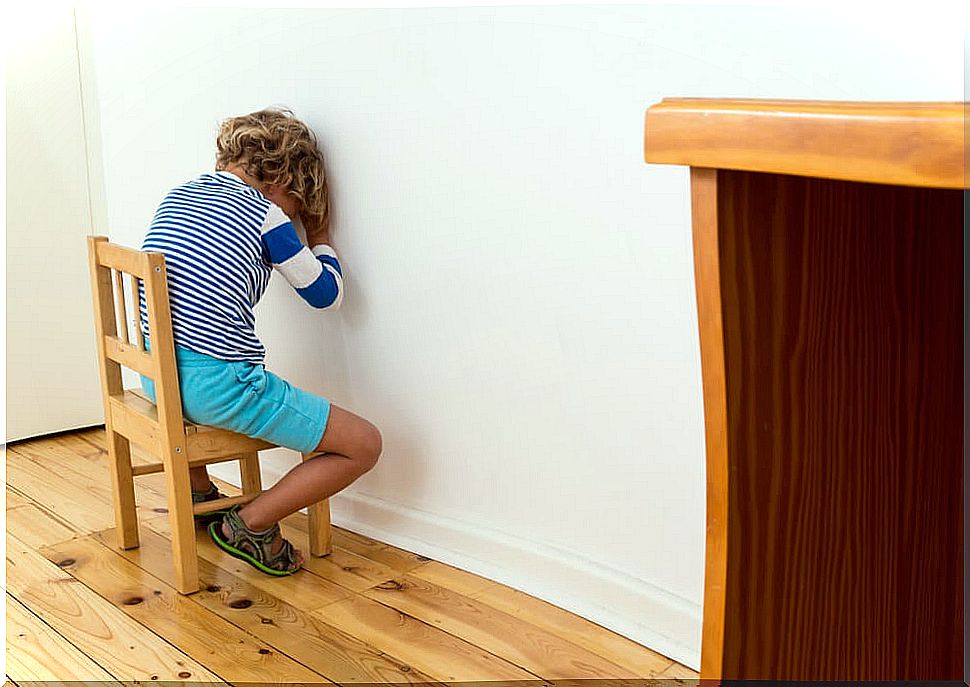Obedience According To Montessori

To understand obedience according to Montessori, it is necessary that we understand the relationship between will and obedience. Many think that the Montessori methodology, whose premise is that we must “follow the child” , means that we have to “allow the child to do whatever he wants,” but this is not the case.
Obedience is one of the key parts of Montessori education, but seen in a more natural way, without forcing and without imposing. So what does the Montessori method want to tell us about obedience? How can we obtain it while respecting the nature of the child and without forcing anything? We invite you to continue reading this article to get the answers to those questions.
Obedience according to Montessori: what does it say?
In Montessori philosophy, it is essential to understand and understand the laws of nature in order to understand the why of everything that Montessori proposes.

According to María Montessori, obedience is “a teacher who tells children what to do, and they obey when they realize the order” (the absorbing mind).
What is this about the absorbing mind? María defined it as: “Children are like sponges, they acquire most of the knowledge they obtain almost without realizing it and without effort, they do not need anyone to teach them intentionally. They learn by observing, listening, living and feeling ”.
Thus, María Montessori said that we could understand obedience in two ways:
- The teacher or parent who orders the children harshly and imposingly in each of their actions. And, faced with this situation, the child can act in two ways: give up developing his own will or fight against the teacher or his father. Neither of these ways of acting is good.
- Think of obedience as part of a natural process that develops in the child. If we give him his space to develop his will, he will obey by free choice.
And this is what we want to happen, that the little one learns to obey without impositions, without servitudes or a closed mind that obeys just because. Nor is it a matter of taking it to the other extreme, that of disobedience and chaos. Freedom and discipline are two key parts that cannot exist without the other.
The three levels of obedience according to Montessori
For children to develop healthy obedience, the first thing we must work on is developing their will. María Montessori proposed three levels for its development : will directed by the child’s natural instincts, when the will already becomes conscious and, finally, the child consciously controls the will and shows a willingness to obey.
First level of obedience
This level occurs in children under three years of age. Here they obey according to their natural impulses ; they have neither a conscience nor a developed will to obey their caretakers.
Therefore, in order to obey, the child, first, has to develop his will, and this he will do through practice and he will go, little by little, to the next levels.
Second level of obedience
Once the child, with practice, has developed his will, he can obey all the time. Use her will to follow yours and, although this seemed the final goal, María Montessori observed another higher level of obedience.
Third level of obedience
Here the mental development is superior and the child is able to understand that the parents want and want the best for him, and he realizes that he wants that too. So you will find that by picking up your toys you will have a tidy room that you will like better and you will want to clean up the mess because you know it is for the best.
The development of the child’s will with practice
The child can use his will to obtain the desired level of obedience. This will, like everything else, can be trained through practice, but how can we practice that will?
- Always avoid influencing children’s tastes and preferences with our decisions.

- Always apply consequences for your actions instead of punishments. When the child refuses, for example, to pick up his toys, we cannot enter into a battle to see who can do more. That is when, with a firm and serene attitude, we must tell him “it seems that you don’t want your toys because you don’t want to pick them up . ” At that point, the child is faced with two options, so he will begin to obey when he sees which is the smartest option. Thus, the consequences that we impose must always be met.
- Avoid making decisions that seem “best” to us after the child has already made one. For example, if he has decided to eat a York ham sandwich, do not tell him that it is better than turkey, which is healthier. If we change his choice once he has already made it, the little one will feel annulled and there will be a fight between wills, yours and his.
- Provide you with various options to encourage your free choice. For example, you can ask him if he wants to go to the park or the mall, if he prefers milk or juice, or if he wants to ride the slide or swing.
Obedience according to Montessori in education
We have already seen that obedience is closely related to the will and that it is essential that children develop their will in a natural way, without forcing anything and without forcing. Applying obedience according to Montessori is to let our children develop a will and be able to understand that obeying is nothing more than doing something that will be positive for them.
It has become clear that, like everything else, the will can be practiced and that there are some options we can follow to get our children to develop healthy obedience. With patience, love and creativity, we can put into practice exercises that help develop that will that is growing in our children.










